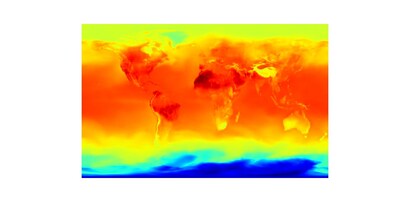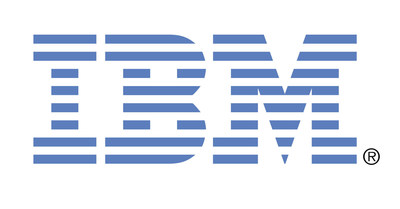New AI Foundation Model by IBM and NASA Revolutionizes Weather and Climate Analysis
Yorktown Heights, N.Y., Sept. 23, 2024 /PRNewswire/ — IBM (NYSE: IBM) has introduced a groundbreaking AI foundation model for weather and climate applications, now available as an open-source tool for scientists, developers, and businesses. Developed in collaboration with NASA and contributions from Oak Ridge National Laboratory, this model offers a versatile, scalable solution to tackle various challenges in short-term weather forecasting and long-term climate projections.

The new model, named "Prithvi WxC: Foundation Model for Weather and Climate," has been designed with a unique architecture and training regime, making it capable of addressing a wider range of applications compared to existing weather AI models. According to a paper recently published on arXiv, potential applications include generating targeted forecasts based on local observations, predicting severe weather patterns, enhancing the spatial resolution of global climate simulations, and improving the representation of physical processes in numerical weather and climate models. For instance, in one experiment, the model accurately reconstructed global surface temperatures from a mere five percent sample of the original data, indicating its potential for broader data assimilation tasks.
The model has been pre-trained on 40 years of Earth observation data from NASA’s Modern-Era Retrospective analysis for Research and Applications, Version 2 (MERRA-2). Its foundation model architecture allows it to be fine-tuned for global, regional, and local scales, providing flexibility for a wide range of weather studies.
The foundation model and its fine-tuned versions are available for download on Hugging Face. The two specialized versions include:
Climate and Weather Data Downscaling
Downscaling is a common meteorological practice of inferring high-resolution outputs from low-resolution variables such as temperature, precipitation, and surface winds. The model can enhance weather and climate data resolution up to 12 times, generating localized forecasts and climate projections. This fine-tuned downscaling model can be accessed on the IBM Granite page on Hugging Face.
Gravity Wave Parameterization
Gravity waves, which are prevalent throughout the atmosphere, influence many atmospheric processes like cloud formation and aircraft turbulence. Traditional numerical climate models have struggled to accurately capture gravity waves, leading to uncertainties in climate process simulations. This AI model helps scientists better estimate gravity wave generation, enhancing the accuracy of numerical weather and climate models and reducing uncertainties in simulating future weather and climate events. This gravity wave parameterization model is part of the NASA-IBM Prithvi family of models on Hugging Face.
"Advancing NASA’s Earth science for the benefit of humanity means delivering actionable science in ways that are useful to people, organizations, and communities. The rapid changes we’re witnessing on our home planet demand this strategy to meet the urgency of the moment," said Karen St. Germain, director of the Earth Science Division of NASA’s Science Mission Directorate. "The NASA foundation model will help us produce a tool that people can use: weather, seasonal, and climate projections to help inform decisions on how to prepare, respond, and mitigate."
"This space has seen the emergence of large AI models that focus on a fixed dataset and single use case — primarily forecasting. We have designed our weather and climate foundation model to go beyond such limitations so that it can be tuned to a variety of inputs and uses," said Juan Bernabe-Moreno, Director of IBM Research Europe and IBM’s Accelerated Discovery Lead for Climate and Sustainability. "For example, the model can run both on the entire earth as well as in a local context. With such flexibility on the technology side, this model is well-suited to help us understand meteorological phenomena such as hurricanes or atmospheric rivers, reason about future potential climate risks by increasing the resolution of climate models, and finally inform our understanding of imminent severe weather events."
"As a premier research institution and computing facility, we’re focused on supporting teams to make research breakthroughs across many areas of science," said Arjun Shankar, director of the National Center for Computational Sciences at Oak Ridge National Laboratory. "Our collaboration with IBM and NASA to support the creation of the Prithvi weather and climate foundation model was a key part of our goal to bring advanced computing and data to problems of national importance, in this case, for weather and climate applications, which need continued computational science and model skill improvements to be impactful."
IBM’s collaboration with Environment and Climate Change Canada (ECCC) aims to test the model’s flexibility with additional weather forecasting use cases. ECCC is exploring very short-term precipitation forecasts using a technique called precipitation nowcasting that ingests real-time radar data as input. The team is also testing the downscaling approach from global model forecasts at 15 km to km-scale resolution.
This weather and climate model is part of a larger collaboration between IBM Research and NASA to use AI technology to explore our planet. It joins the Prithvi family of AI foundation models, including the Prithvi geospatial AI foundation model, which was made available last year as the largest open-source geospatial AI model on Hugging Face. This geospatial foundation model has since been used by governments, companies, and public institutions to examine changes in disaster patterns, biodiversity, land use, and other geophysical processes. The foundation model and the gravity wave parameterization model can be accessed through the NASA-IBM Hugging Face page and the downscaling model can be accessed through the IBM Granite Hugging Face page.
About IBM
IBM is a leading provider of global hybrid cloud and AI, and consulting expertise. We help clients in more than 175 countries capitalize on insights from their data, streamline business processes, reduce costs and gain the competitive edge in their industries. Thousands of governments and corporate entities in critical infrastructure areas such as financial services, telecommunications, and healthcare rely on IBM’s hybrid cloud platform and Red Hat OpenShift to affect their digital transformations quickly, efficiently, and securely. IBM’s breakthrough innovations in AI, quantum computing, industry-specific cloud solutions, and consulting deliver open and flexible options to our clients. All of this is backed by IBM’s long-standing commitment to trust, transparency, responsibility, inclusivity, and service.

For more information, you can refer to the original article on PRNewswire.
For more Information, Refer to this article.

































